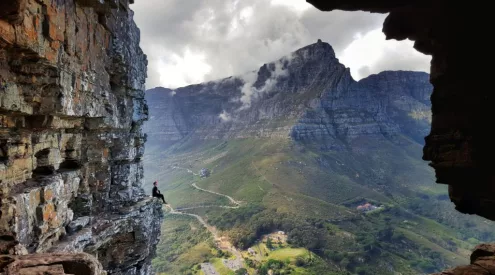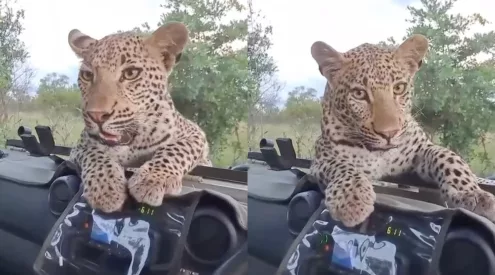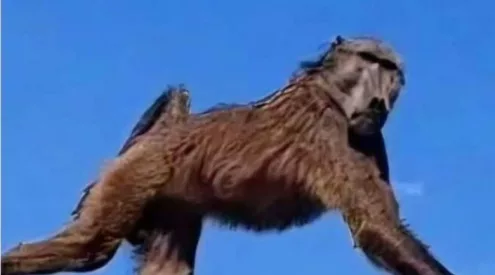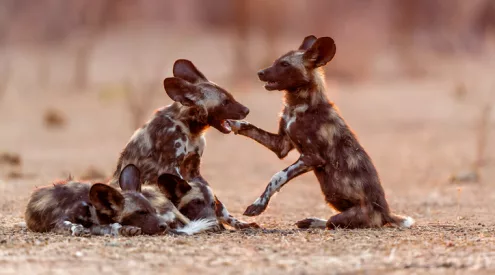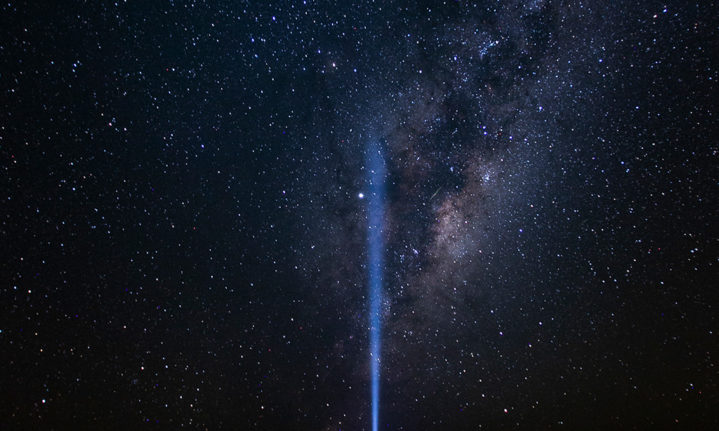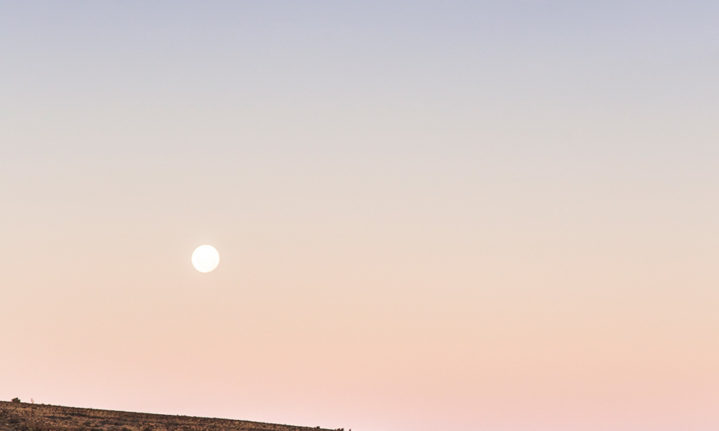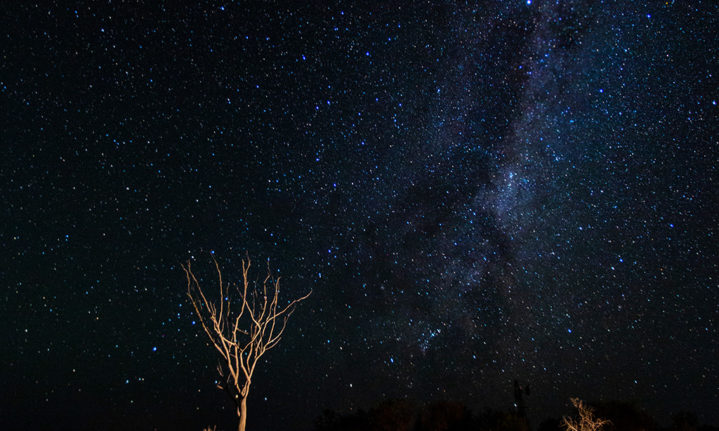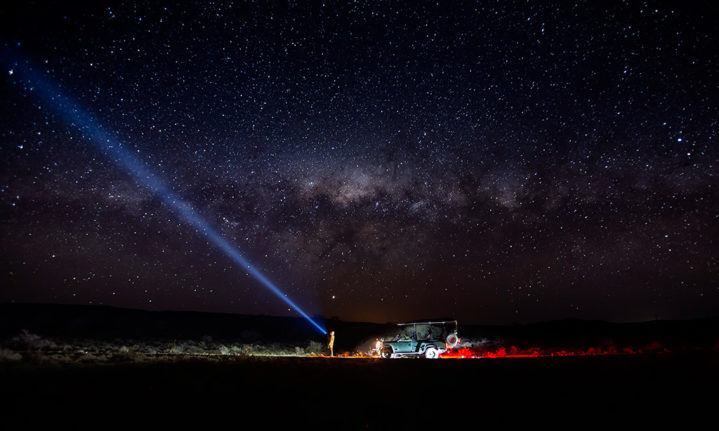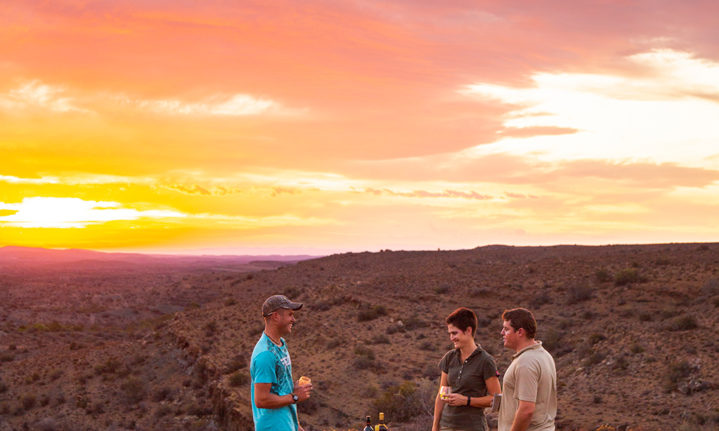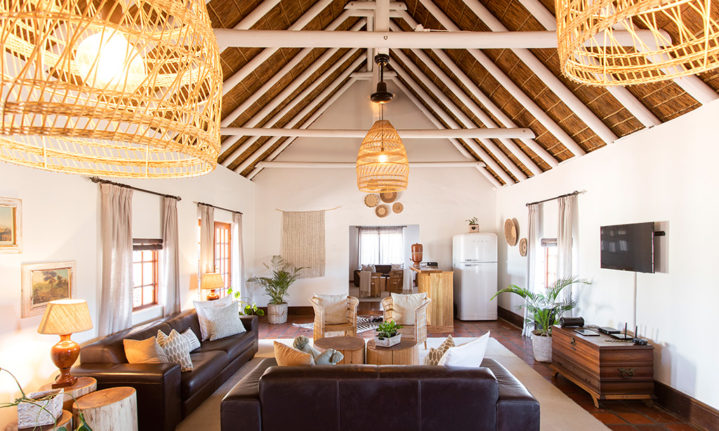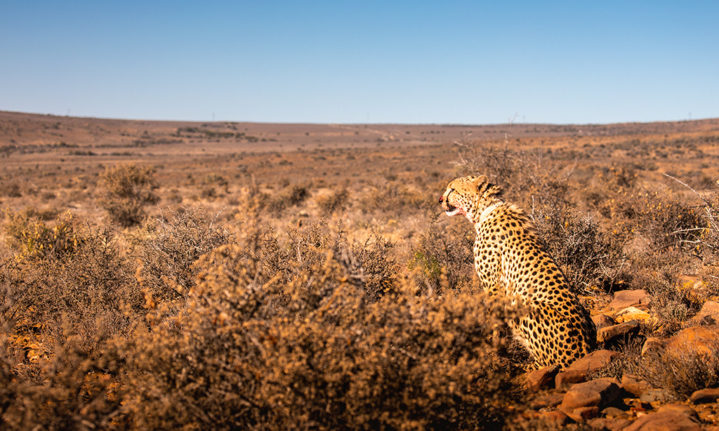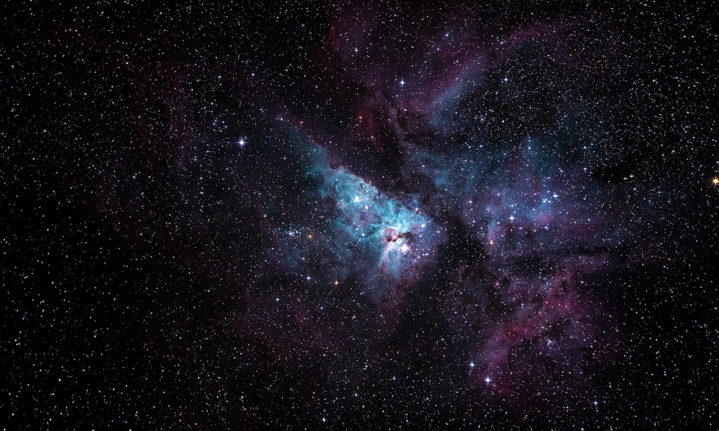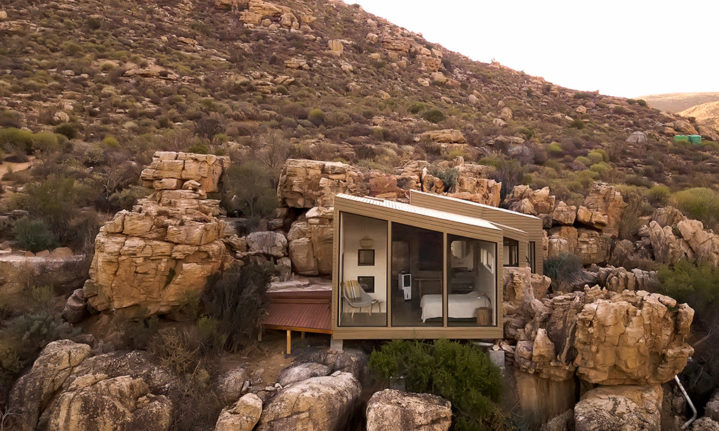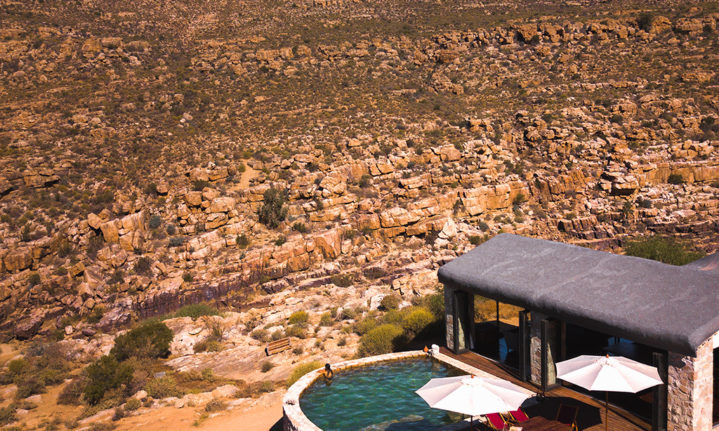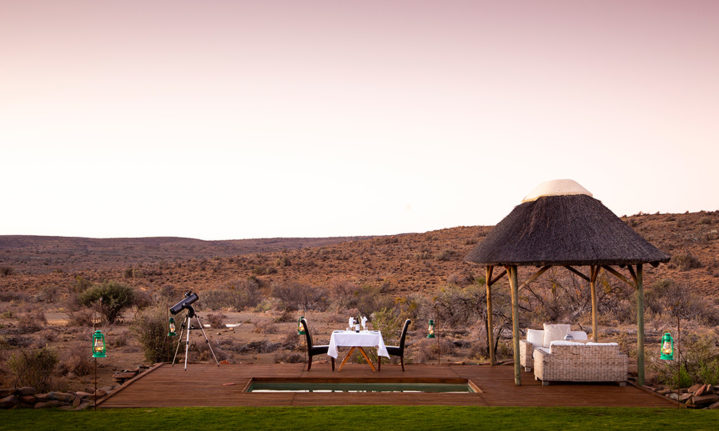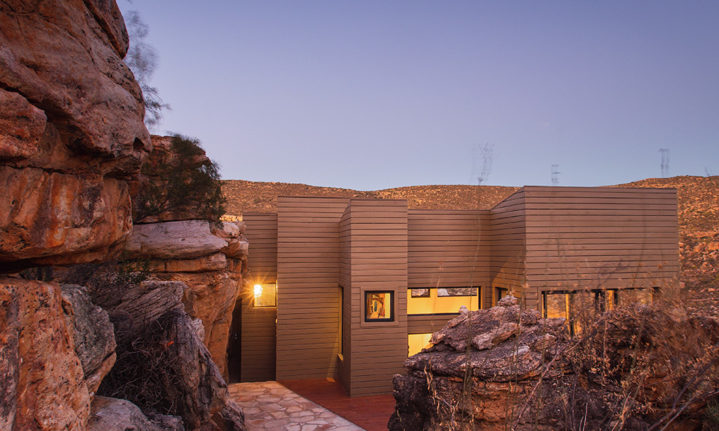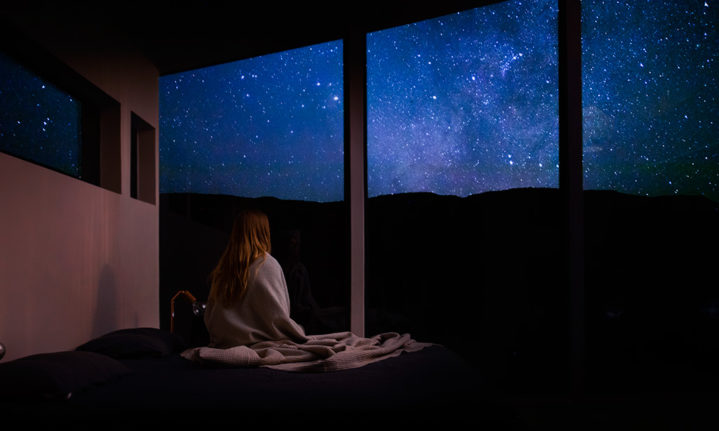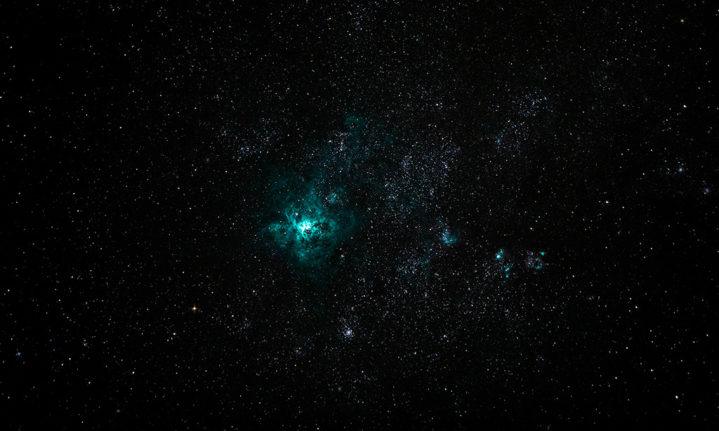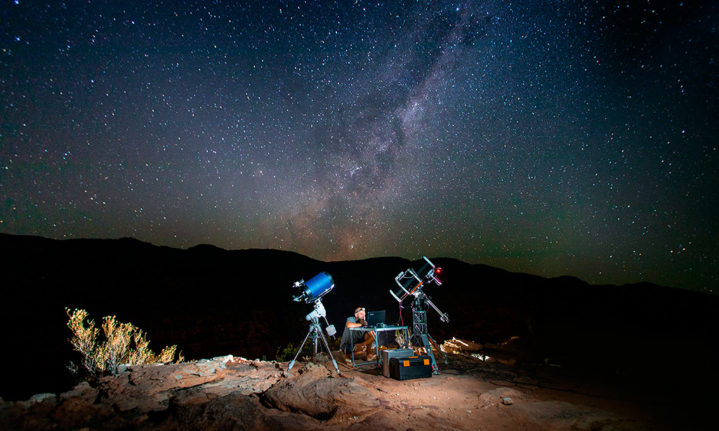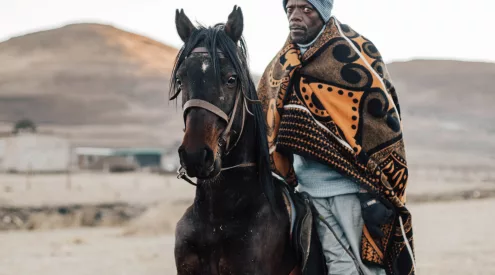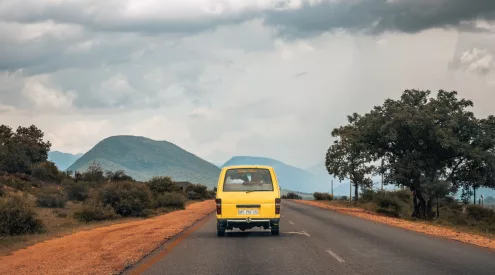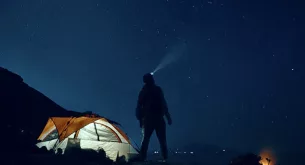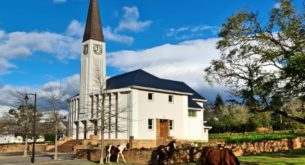The key to creating inspiring astro photos is having enough petrol in your tank to head for the hills and far away from city lights. Photographer Teagan Cunniffe does just that.
Words & photos Teagan Cunniffe
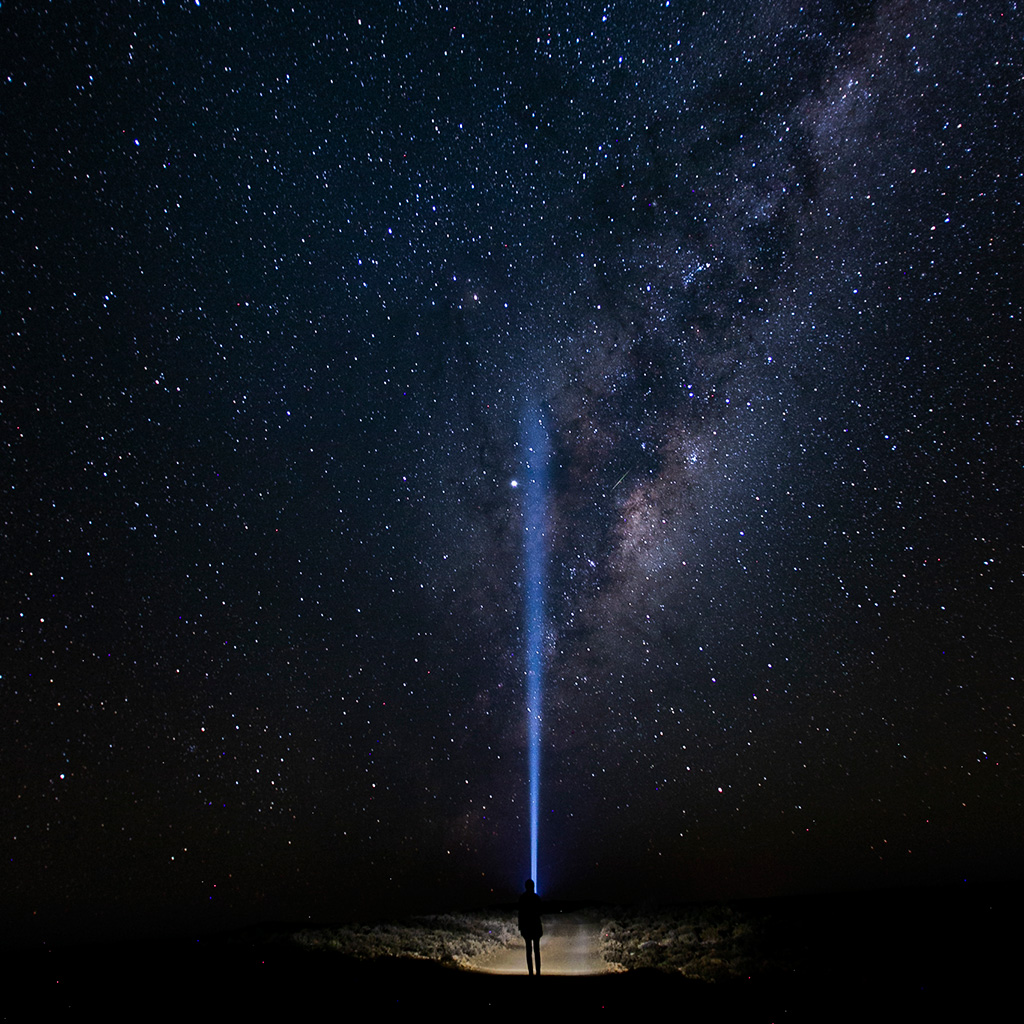
Using a strong torch with minimal light-spill to create ethereal images.
It was 2am and I was wearing every item of warm clothing I had, plus a onesie loaned from Roam Game Reserve’s general manager, Abigail de Swardt. Yet it did little to help with the frigid July temperatures in the Karoo and nothing against the clench of concern in my gut.
When it’s dark and you’re alone on a 5 300h reserve, every shadow looks like a predator. Especially after you’ve spent most of the day locating a displeased female cheetah. Although I was quite aware that cheetahs pose little threat to us bipeds, uMusa had just been relocated from Rietvlei Nature Reserve near Pretoria, and was not used to humans on foot. The image of her face looking down from the rocks, eyes glinting with hardened intent, was imprinted in my mind. At least she’d have a hard time biting through my many layers, I consoled myself mournfully, as I triggered my camera to take a long exposure of the night’s sky.
As a photographer, there’s a moment when you know you’ve found something special to work with. This was one of them. Innumerous stars swept above the game vehicle, starkly evident against the clean, deep darkness beyond. All thought of cheetahs gone, I retraced my steps to my tripod and started experimenting with exposures and torchlight.
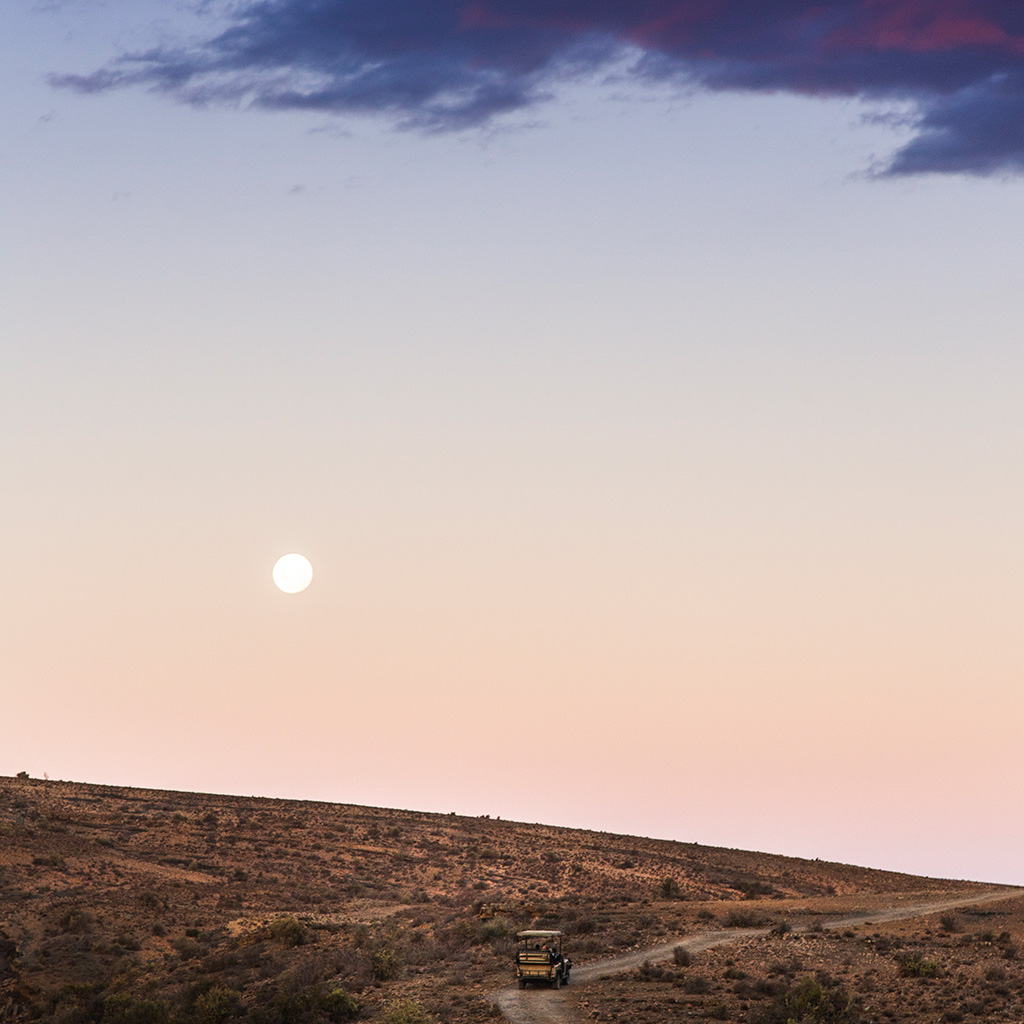
Driving back to Roam’s Safari Lodge with the super moon rising in a purple sky.
Sweeping statements and generalisations are to be avoided in writing, yet I challenge any visitor to the wild areas of Namibia not to come away awed by the constellations they see. Flanked by the red dunes of the Namib-Rand Nature Reserve, I lay on a stretcher bed and watched the Milky Way wheel incrementally across the canvas above. One night was all it took to push my understanding of what a truly magnificent dark sky could look like, and I was enraptured. My love for star photography, however, stems from those late nights spent alone out at Roam, close to the small town of Prince Albert. Large portions of the Cederberg and the Karoo – including Sutherland – approach level 1 on the Bortle Scale. The Bortle Scale, oft mentioned as the Richter Scale for astronomers, estimates the sky’s brightness based on visual cues. Level 9 is inner city skies with only portions of the brightest constellations visible; level 1 is referred to, in a somewhat smug way, as an excellent dark sky…
It’s these dark skies that lured Daria and Heine Rasmussen from Denmark in search of the setting for their next life chapter. Heine, passionate about stars and the galaxies since the age of seven, spent his days in an office job – and nights scaling the abandoned Avnoe Nature Centre, in a former air force training field 100km out of Copenhagen. Once set up, Heine would locate and track specific stars to photograph over multiple days in increasing image detail. Daria, a high-powered media director, resolutely supported his passion but understandably also valued her sleep. Between them they had a dream: to create a mindful retreat in a wilderness area that they could build and run together. Four places were considered: La Palma in the Canarian Islands, mainland Spain, the Atacama Desert in Chile, and South Africa.
They chose South Africa.
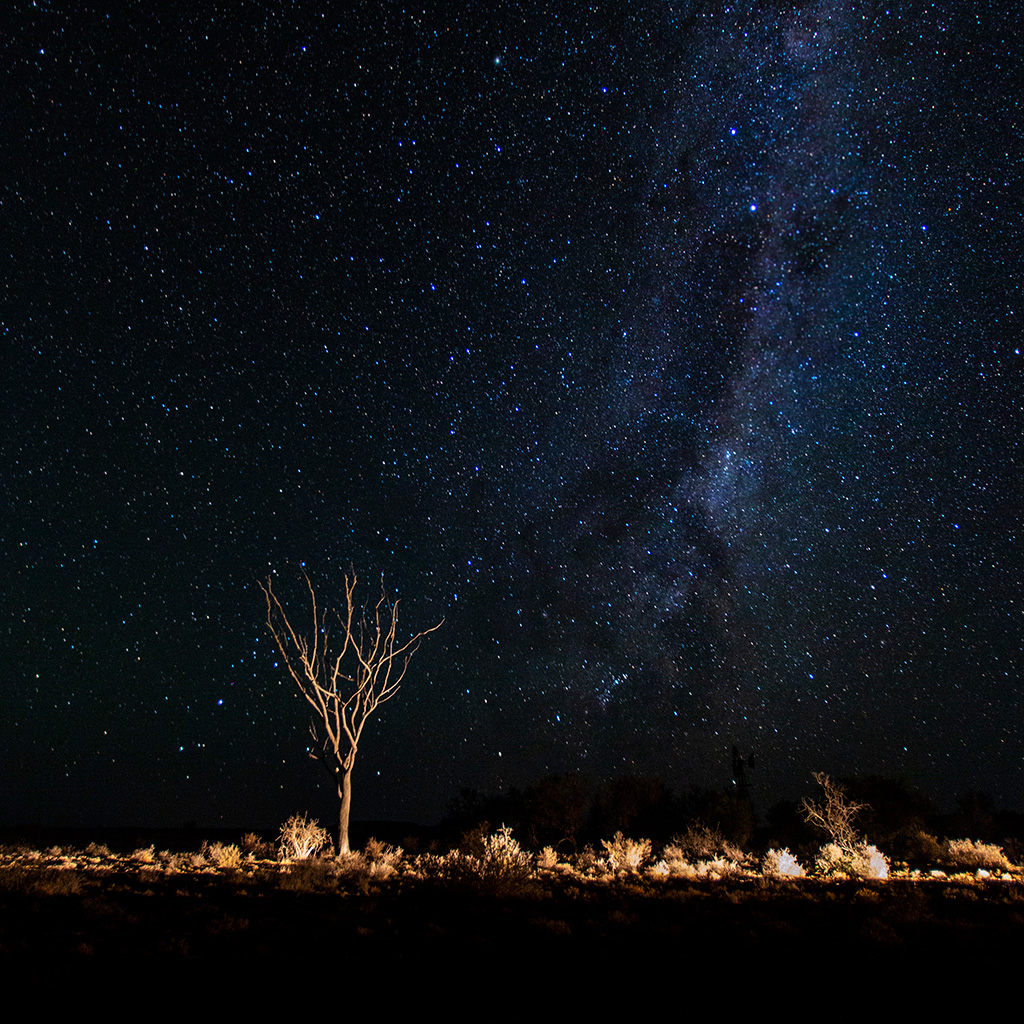
A lone tree breaks the skyline at Roam, making for an ideal subject.
Heine and Daria unveiled Bliss and Stars, a stylish Afro-Nordic retreat in the arid solitude of the Cederberg, to a social media audience in late 2020. Hugging the slope of a mountain, Bliss and Stars overlooks the Doring River and across onto the opposing burnt-orange mountainside. It’s calm here, and the first thing you want to do is… well, nothing. Perhaps go down to the river to swim or paddle with one (or three) of the retreat’s friendly dogs, perhaps read a book or write… the days stretch long and healthy, framed by sunrise and sunset through the glass wall of your cabin. The easy quiet is as antidote to our otherwise busy, technology-fuelled daily lives.
Roughly 130 rock steps separate cabins from the main living area, enough to work up both a fair level of fitness during your stay, and an appetite for meals. Classically trained chef Arabella Parkinson marries delicious flavour to healing nutritional value with her plant-based menu – but, for the lucky ones, the highlight of the evening is served at South Africa’s newest and largest private astronomical observatory after dinner.
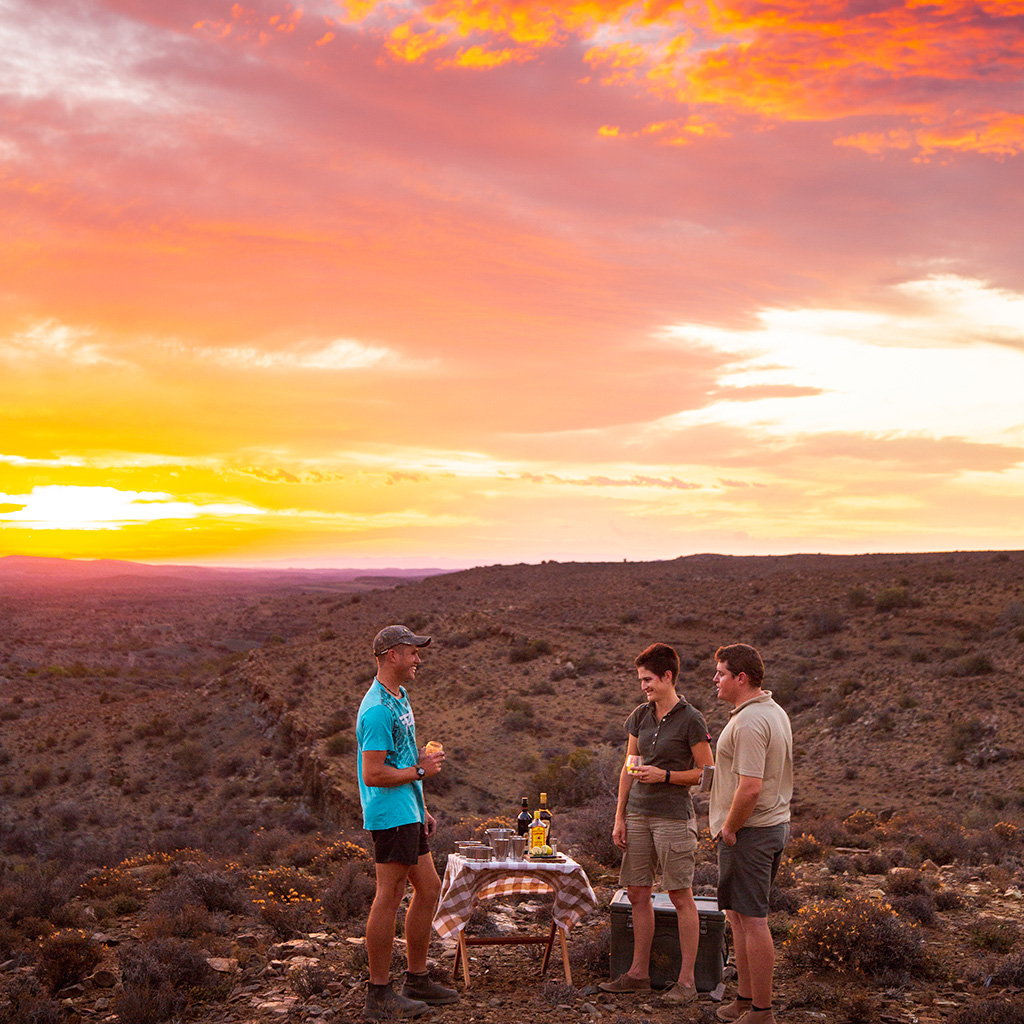
You’d be remiss to skip sun-downers at Dream Lodge viewpoint.
The sky above was studded with white lights pricking through an infinite blanket of blackness. Beside us loomed two human-sized telescopes with wide barrels pointing skywards. Heine tapped on his linked computer to input the names of stars and, with a low whirr, the larger of the two telescopes rotated towards its target.
‘Let’s use your camera,’ Heine said, reaching over to attach my Canon 5D Mark IV to the back of the telescope. Still somewhat sceptical dialled in the exposure (ISO 3 200 and shutter speed of three minutes). Our conversation paused as we waited in suspense. Despite having practised astrophotography since 2008, Heine was just as invested as I, if not more so. Click. We checked the LCD camera screen. There, on the back of my camera, was a green and blue nebulous gas cloud surrounding diamond-light-flared stars. I gasped. Heine smiled.
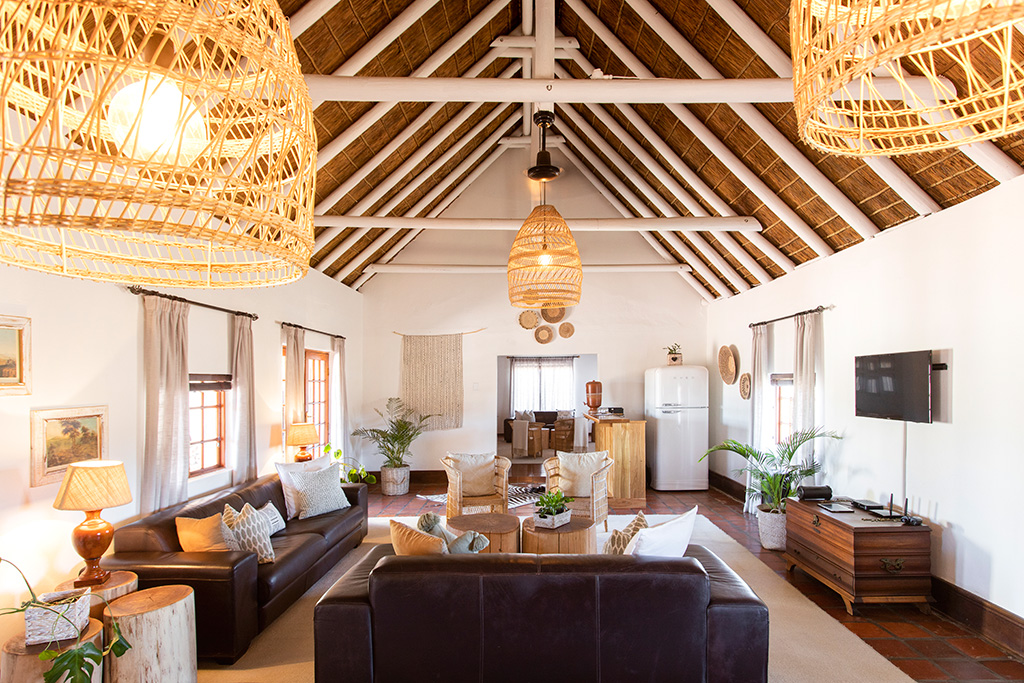
The cool, comfortable decor at Roam, along with the seclusion, quickly turns the Manor House into your private home
We dialled in another co-ordinate, and another: ‘That’s 47 Tucanae, the second largest star cluster with millions of stars, that’s the Black Eye galaxy…’ until we were forced to stop by the creeping blue light of dawn. Prior to this night, I’d always thought images like this were reserved for the NASAs of the world and the telescopes that accompany them, inaccessible to the likes of you or me.
If my awareness of stars had been born in Namibia and gained depth in the Karoo, it surely opened its eyes in the Cederberg. For it was here that I finally understood that the black and white sky above us is actually overflowing with colour.
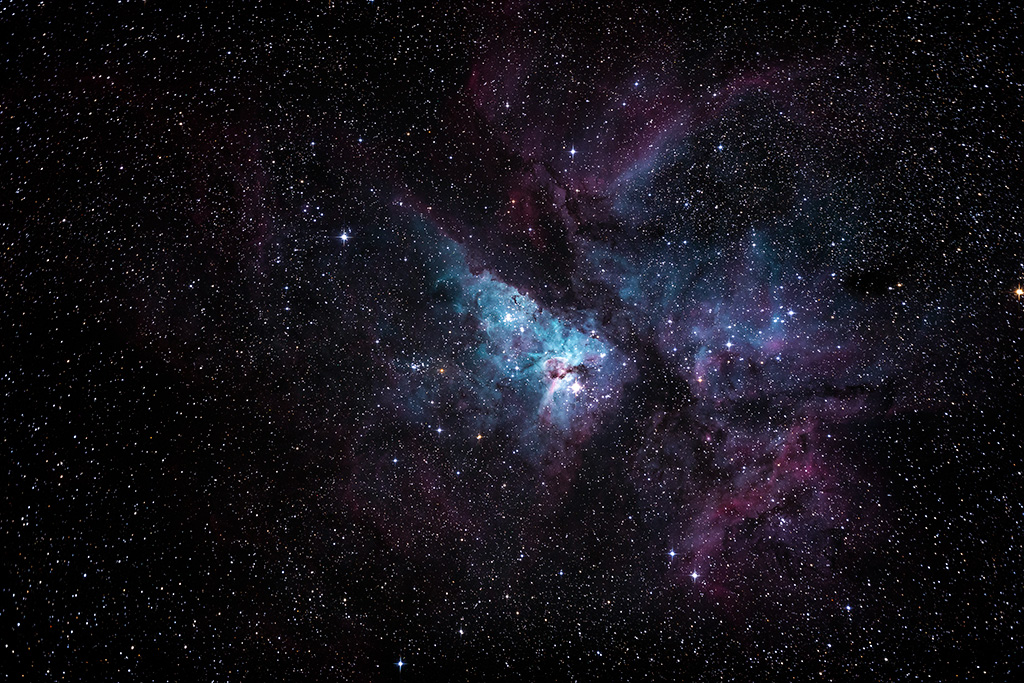
Carola Nebula viewed through the author’s Canon 5D Mark IV.
Mother uMusa
The last wild cheetahs were seen in Beaufort West around 150 years ago. uMusa was introduced to Roam Private Game Reserve with the help of the Endangered Wildlife Trust in 2019. After an adjustment period, she quickly relaxed enough to hunt on her own and mate with the two resident male cheetahs, successfully mothering three healthy cubs in late 2020. These cubs are the first naturally wild cheetahs born in this part of the Karoo for a very, very long time.
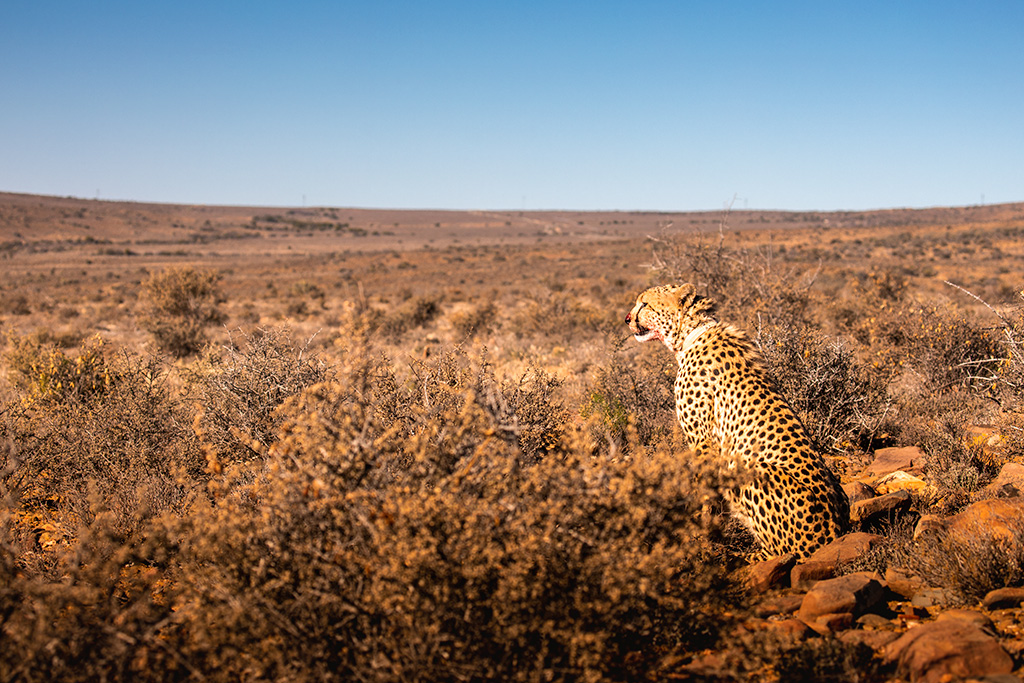
A male cheetah, looking sedate after a good meal.
See For Yourself
The Star Bathing experience at Bliss and Stars in the Cederberg is ideal for those with a passion for celestial bodies. Along with being introduced to the majesty of the night sky, guests will enjoy fine dining, remote wilderness and upmarket accommodation. Dates over June/July/August only.
Rates from R13 000 pp for three night.
blissandstars.com
At Roam Game Reserve, late-night astrophotography sessions are preceded by brunch, game drives (and the opportunity to photograph wildlife or track cheetah on foot), sundowners and a three-course dinner.
R2 250 pp, booked directly via
[email protected]
For optimal astrophotography, you need areas that are dry and remote from civilisation. Humidity makes for muggy air and poor star viewing, compared to more arid areas. !Ae!Hai Kalahari Heritage Park, Northern Cape (declared an international dark sky sanctuary in 2019) is world-renownded for its star viewing. Alternatively, any place far from the light pollution of city skies will do – the Amphitheatre in the Central Drakensberg, Golden Gate National Park, Kruger park and the Waterberg being good alternatives.
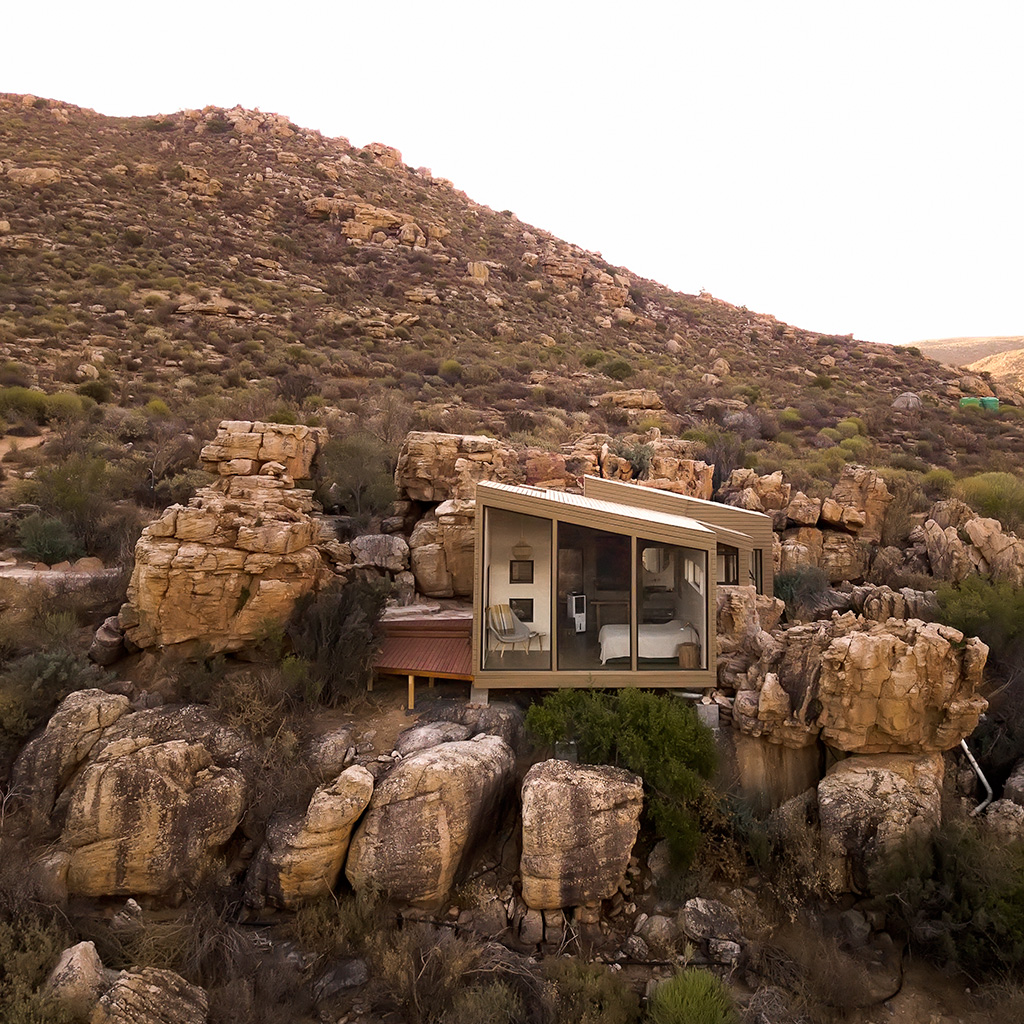
Klipspringer Cabin at Bliss and Stars is simple and spacious, with glass windows that maximise views.
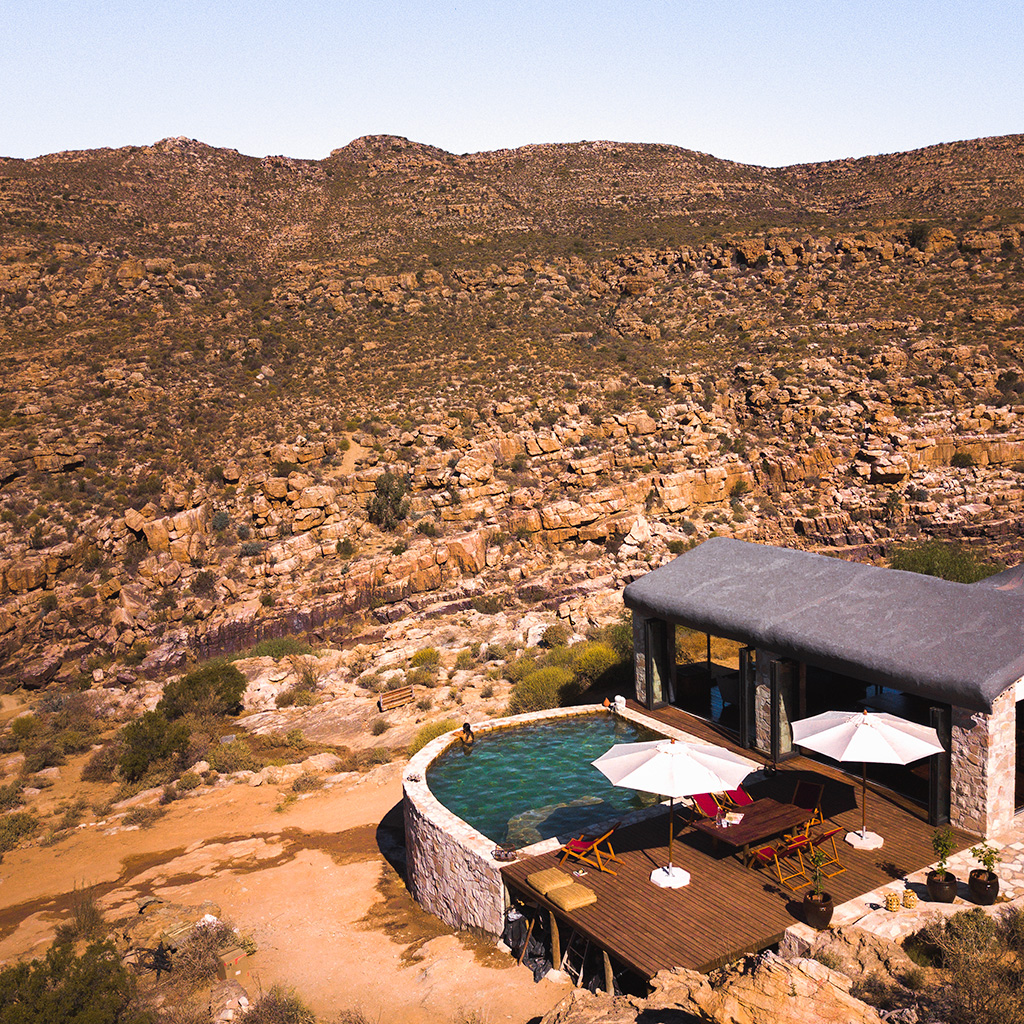
Three natural freshwater springs flow from this inhospitable area – one is a hot spring that feeds into the pool at Bliss and Stars.
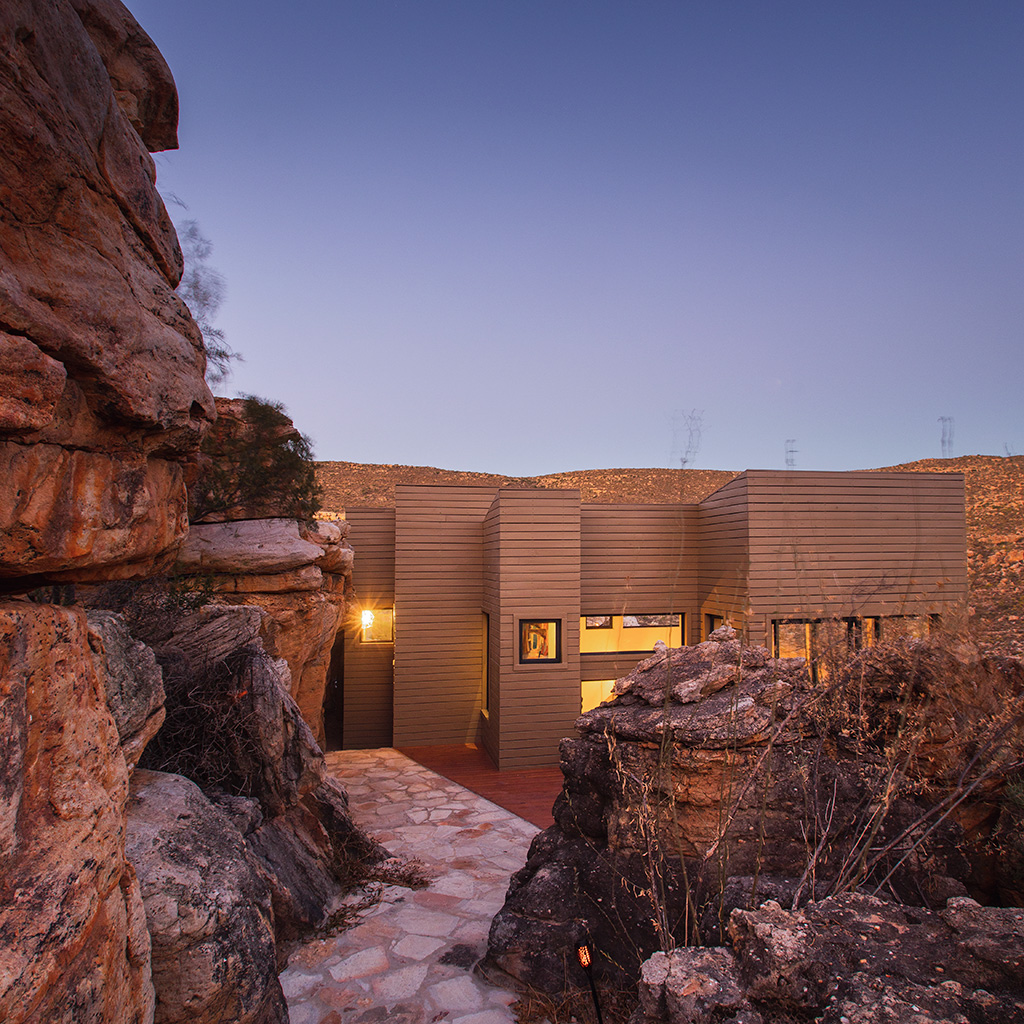
Each cabin at Bliss and Stars has a different floor layout, built to fit their surrounding rocks.
Milky Way Season
The core shows in earnest from mid-February, appearing close to the horizon just before dawn. Gradually the period of visibility at night extends until June/July, when the Milky Way appears at its highest point of the sky around midnight. Because it’s mid winter, there’s the advantages of longer nights and crisper, clearer air with low humidity levels (location-dependent). Thereafter the Milky Way sinks back towards the horizon, appearing closer to dusk, with the core disappearing from view from November until February again.
Tip: Milky Way is best viewed in June and July – start planning your shoots from mid-April.
The 500 Rule
For crisp, sharp stars in your image, take the number 500 and divide it by the focal length of your lens to give the maximum length of time that your shutter should stay open to avoid visible star trails.
Example: 500/16mm focal length = 31 seconds.
Exposures longer than this will have visible star trails.
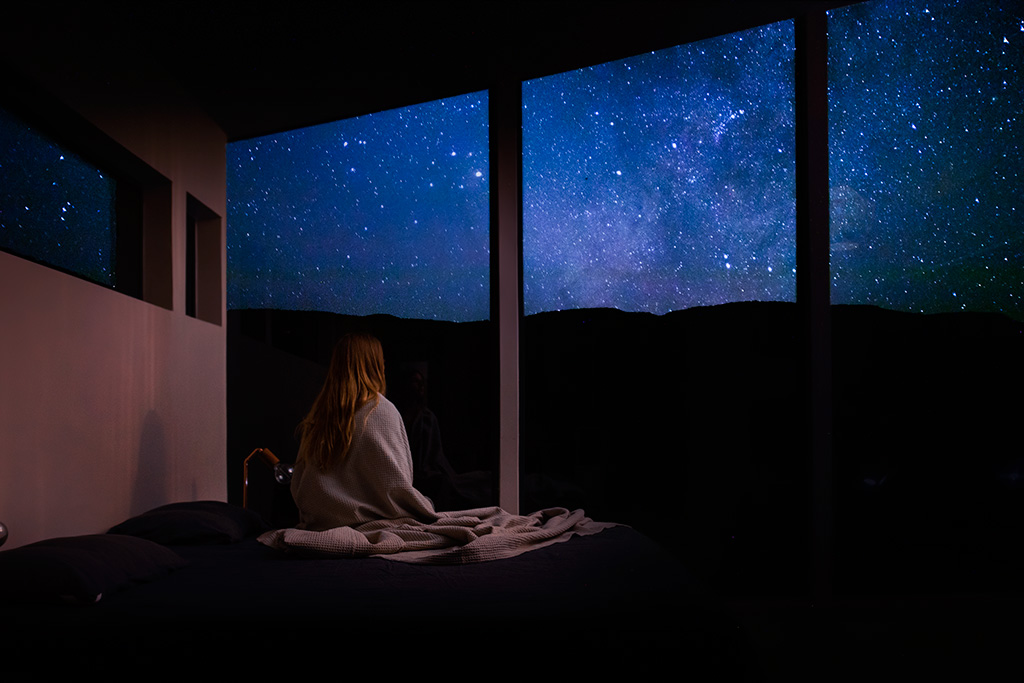
Star gazing right from your bed in the Cederberg.
Camera Settings
Pre-planning
During daylight hours, find a subject (rock formation, tree, building, etc) with a south-facing backdrop. I use an App called PhotoPills (R150 once-off purchase) to overlay the position of the Milky Way at selected times onto the cell phone camera’s live view. Make note of where you are using visual cues, or drop a pin with your location onto Google Maps so that you can find it again at night.
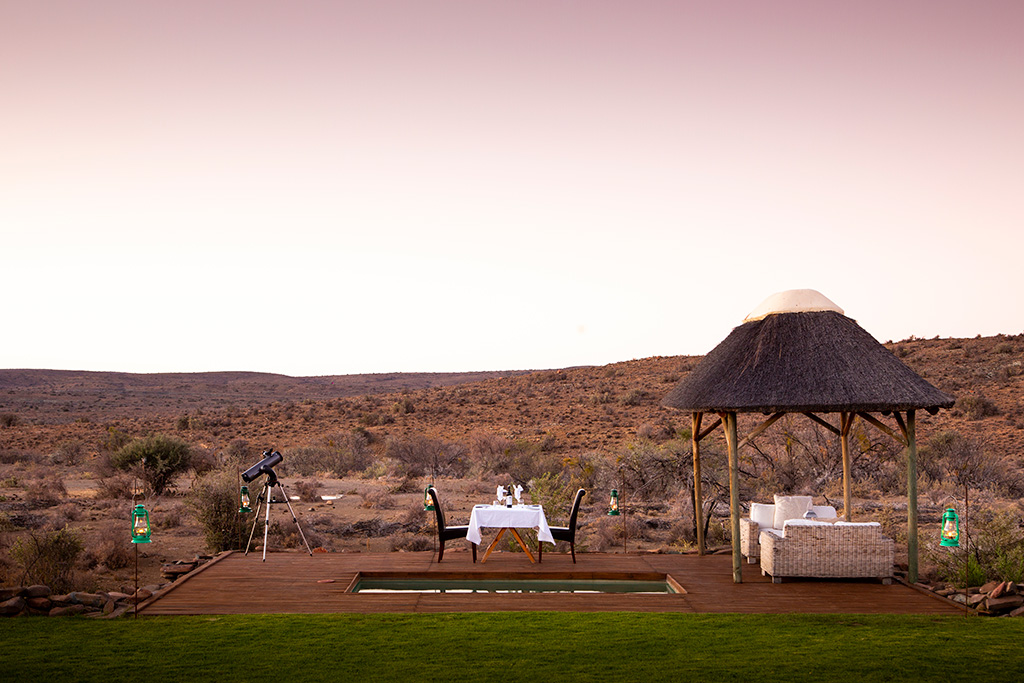
After a private dinner by the pool, it’s star-viewing time through Roam’s in-house telescope.
Shooting
Base settings: ISO 1 600
(depending on your camera’s ability to handle low light and ISO interference, you may be able to push this further)
Aperture f/2.8
Shutter speed 30 seconds.
Set up a tripod and camera. Switch focus to Manual.
Set the focus by using a bright torch either shining on, or from, your subject. Turn off the torch and take one quick photograph to assess the level of light and how the stars are displayed. Adjust the composition as needed, and exposure by changing your ISO level.
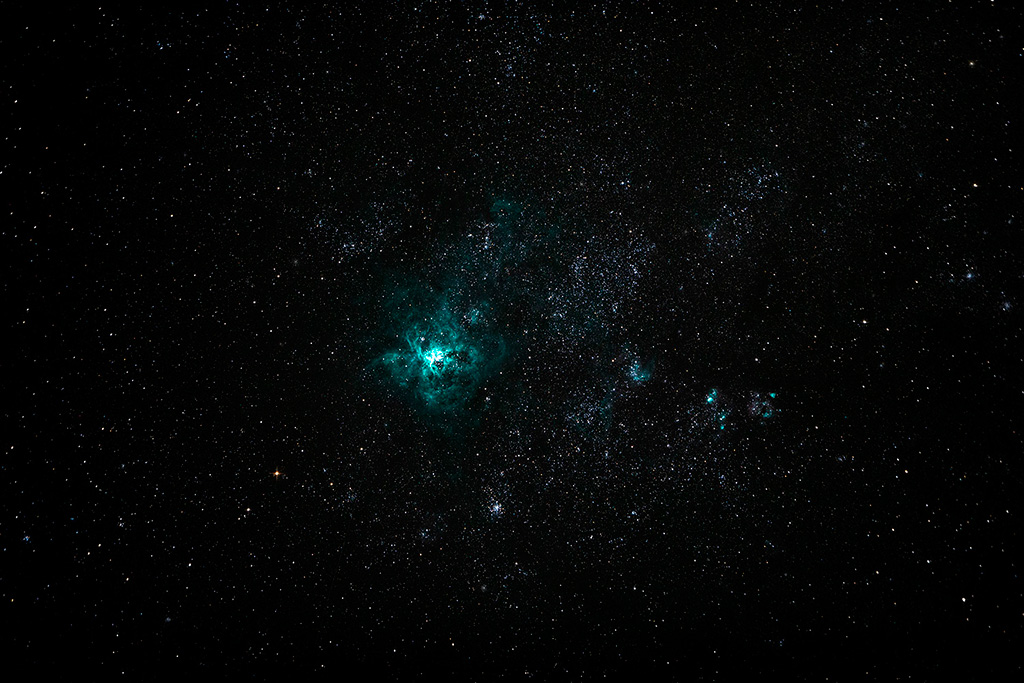
The Tarantula Nebula, also known as 30 Doradus.
Light It up
Once you’ve found the optimal exposure for the Milky Way, you can light up your subject. Add one light at a time, adjusting the levels of brightness or the duration that the light is on for to prevent hotspots (blown-out highlights). To instantly ‘freeze’ a person clearly in place, use a camera flash. Added bonus – they don’t have to hold a pose for 30-seconds.
Solo Travellers
I feel your frustration!! Set your composition and leave a bright torch on the ground – roughly where you want to stand in the image – to set your focus.
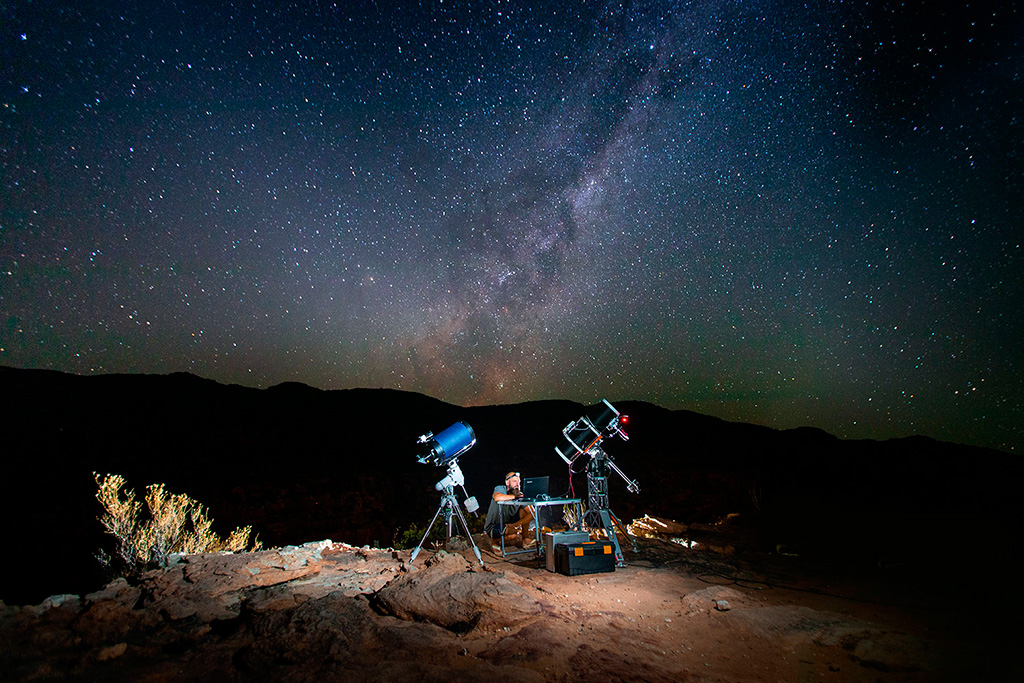
Heine can typically be found here at night, tracking and photographing stars with his telescopes or showing guests close-up details of the moon’s surface.
Using an intervalometer
(a device that plugs into a camera and controls how often, how long and how many shots are taken), set an exposure time of 30 seconds and trigger the shutter to capture continuously. Walk to the torch and shine it in a direction you want – I love shining a beam directly into the night sky. Listen for the camera shutter click, and hold still for the subsequent exposure.
Walk back to your camera, check the pic, and make any adjustments, eg the level of torch light, or where you are aiming it. When you are happy with light levels, let your intervalometer run for multiple 30-sec exposures at a time as you experiment with various poses. Try not to freeze in the cold.

